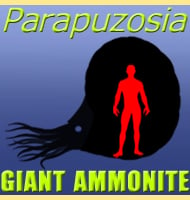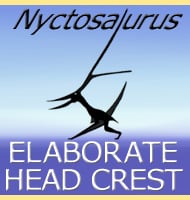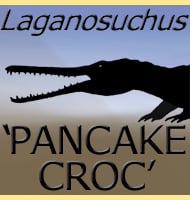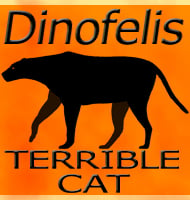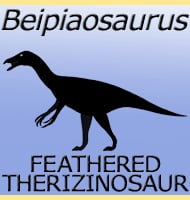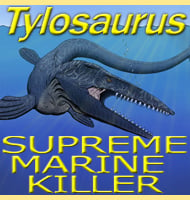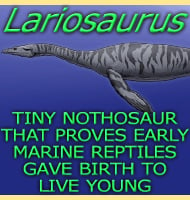In Depth
Langobardisaurus was a small prolacertid reptile that was very lightly built. The rear legs can be clearly seen to be much longer than the fore legs, and while a quadrupedal pose may have been more usual when resting, a bipedal stance would have been easily possible when running or rearing up searching for food. These rear legs and light build have led to plausible suggestions that Langobardisaurus would have been a very fast runner, either pursuing small creatures, or evading predators. The orbit of the skull is large, indicating that Langobardisaurus had good eyesight and was visually orientated when searching for food.
The dental arrangement of Langobardisaurus is very interesting as there are three arrangements of the teeth. The teeth of the premaxilla at the front of the mouth are conical and actually point out forwards at a slight downward curve. It’s perceivable that this tooth arrangement may have been a form of ‘scraper’. The teeth immediately behind them are also conical but in a more usual up/down arrangement and would have been suitable for piercing the bodies of small animals like insects. Finally the teeth behind these were lower and with multiple cusps, and these were probably the main processing teeth before food was swallowed.
A 2002 study by S. Renesto, F. M. Dalla Vecchia and D. Peter looked at the varied dentition and bipedal stance and considered that Langobardisaurus may have been herbivorous, using its additional reach and forward facing teeth to snip of vegetation. An alternative proposition though would be that Langobardisaurus was an insectivore. In this scenario the forward face of the premaxilla could have been used to root out insects and grubs from crevices in rocks, plants or even the ground. Once found, prey could have been killed by the larger conical teeth in the anterior portion of the mouth before the hard shells were ground and broken up by the small teeth of the rear. The long neck would have still been used for additional reach, but this time into areas where the body could not pass through to pursue prey. An insectivorous diet would also support the light weight build and long legs additionally validating the need for speed and agility.
In 2013 a new specimen of Langobardisaurus was found in Austria, the first known occurrence of the genus outside of Italy. A subsequent revision of this specimen (Saller, Renesto & Dalla Vecchia, 2013) included a revision of other specimens which also postulated that the species L. tonelloi is actually the same as the type species P. pandolfii, and therefore should be a synonym of the type species. A second species named L. rossii was also considered to actually be a different kind of reptile, probably a rhynchocephalian. If this is also correct then this would make the type species P. pandolfii the only valid species within the genus.
Further Reading
- A new prolacertiform reptile from the Late Triassic of northern Italy. - Rivista Italiana di Paleontologia e Stratigrafia 100(2):285-306 - S. Renesto - 1994. - Un nuovo rettile (Reptilia, Prolacertiformes) dal Norico di Preone (Udine, Italia Nordorientale). Nota preliminare [A new reptile (Reptilia, Prolacertiformes) from the Norian of Preone (Udine, N.E. Italy). Preliminary Note]. - Gortania - Atti del Museo Friulano di Storia Naturale 16 (1994):67-76 - F. Bizzarini and G. Muscio - 1995. - Preliminary note on a specimen of Prolacertiformes (Reptilia) from the Norian (Late Triassic) of Preone (Udine, north-eastern Italy). - Gortania - Atti del Museo Friulano di Storia Naturale 18:33-40 - G. Muscio - 1997. - Morphological evidence for bipedalism in the Late Triassic Prolacertiform reptile Langobardisaurus - Senckembergiana Lethaea 82(1): 95-106 - S. Renesto, F. M. Dalla Vecchia & D. Peters - 2002. - A revision of Langobardisaurus rossii Bizzarini and Muscio, 1995 from the Late Triassic of Friuli (Italy) - Rivista di Paleontologia e Stratigrafia 113(2): 191-201 - S. Renesto & F. M. Dalla Vecchia - 2007. - First record of Langobardisaurus (Diapsida, Protorosauria) from theNorian (Late Triassic) of Austria, and a revision of the genus - Neues Jahrbuch f�r Geologie end Pal�ontologie-Abhandlungen 268 (1): 89–95 - Franco Saller, Silvio Renesto & Fabio M. Dalla Vecchia - 2013.

